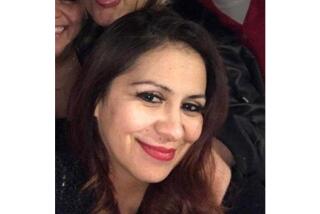Coronado mansion wrongful death lawsuit opens in San Diego court
- Share via
San Diego — Officially, Rebecca Zahau died at her own hand.
Investigators who first looked around the Coronado mansion where she reportedly was found hanging — naked, gagged and bound hand and foot — suspected they had a homicide on their hands.
But after a seven-week investigation, Sheriff Bill Gore held a news conference to announce that evidence and autopsy results led to the conclusion that Zahau’s death on July 13, 2011, was a suicide.
Zahau’s mother and sister have refused to believe that the 32-year-old surgical technician with a strong Christian faith killed herself. This week, trial is to start in San Diego Superior Court in the family’s wrongful death lawsuit.
Their suspicions have fallen on the only other person known to be at the home at the time: Adam Shacknai, brother of Zahau’s boyfriend, Arizona pharmaceuticals tycoon Jonah Shacknai.
Adam Shacknai called 911 to report having found Zahau hanging. He said he cut the rope to lay her on the ground before Coronado police and medics got there.
With no criminal charges pending against anyone, Zahau’s family initially filed a wrongful death lawsuit in 2013 against Adam Shacknai, Jonah Shacknai’s ex-wife, Dina Shacknai and her sister, Nina Romano. It was alleged that the three had attacked, strangled and hanged Zahau. The sisters were dropped from the suit when clear evidence revealed they were not present at the times crucial to the case.
The suggested motive for the alleged assault was that Zahau was the adult in charge at the mansion when Jonah Shacknai’s 6-year-old son, Max, took a fatal fall from a second-story stair landing two days earlier, on July 11. His death was ruled an accident.
That same reasoning has been used to try to explain why she would commit suicide, that she was overcome with guilt.
Jury selection is expected to begin Tuesday before Judge Katherine Bacal, with attorneys’ opening statements possibly later in the week.
Zahau’s controversial death quickly caught the eye of national media. Commentators, true-crime writers, forensic experts and conspiracy theorists sharply divided on whether San Diego County authorities got it right.
Some thought the Shacknai fortune bought off investigators.
Others questioned whether Zahau could have tied her own hands and feet in such intricate rope knots. Others didn’t think she would strip herself bare, tie one end of a rope to the feet of a bed, make a noose at the other end and slip it around her neck, stuff a T-shirt into her mouth, then launch herself over a second-floor bedroom balcony.
One of the most inexplicable features in the evidence was a phrase scrawled on the bedroom door in black paint: “She saved him can you save her.”
At Gore’s news conference, reporters were told that DNA on the ropes, blood, fingerprints and bare footprints on the dirty balcony all belonged to Zahau. He said no other questionable DNA was found at the scene.
San Diego attorney C. Keith Greer drafted the lawsuit against Adam Shacknai and has said in interviews that Zahau was killed because of something “sexual in nature.” Zahau’s mother, Pari Zahau; sister, Mary Zahau-Loehner; and deceased father Robert Zahau are plaintiffs in the case.
They allege that Shacknai wrote the cryptic riddle on the bedroom door. Sheriff’s investigators did not solicit a handwriting expert’s opinion.
Shacknai has hired high-powered Chicago attorney Daniel Webb and New York lawyer David Elsberg.
On Friday, Webb issued a statement about the case, calling the lawsuit “shameful.”
He said there is no credible evidence that Shacknai played any role in Zahau’s death apart from finding her.
“We are confident that the trial in this case will conclusively vindicate Adam and finally bring closure to these outrageous allegations,” the statement said.
Heavy media presence is expected at the trial, which is expected to last a month.
PREVIOUS
Twitter: @pdrepard
More to Read
Sign up for Essential California
The most important California stories and recommendations in your inbox every morning.
You may occasionally receive promotional content from the Los Angeles Times.













